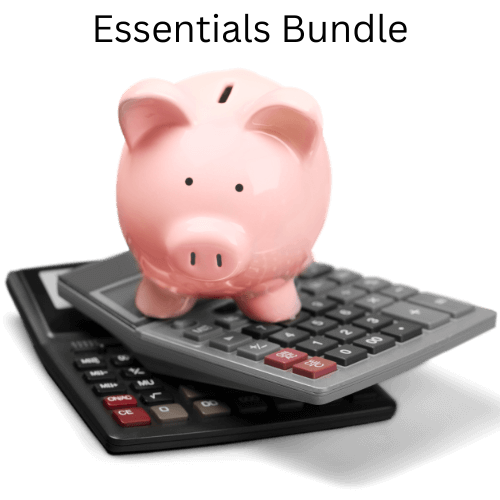In the trading world, risk is an inevitable factor that all traders must manage. Risk management is essential for long-term success, whether you trade stocks, cryptocurrencies, or other assets. Even experienced traders can face substantial losses without a solid risk management strategy.
Traders use various risk measures to quantify potential losses and protect their investments.
Traders can assess and manage risk using platforms like Prime XBT, which offer a reliable trading experience. With advanced charting, real-time analytics, and comprehensive resources, Prime XBT provides traders with the necessary tools. So, join PrimeXBT today! Use promo code PRIMEOTT to receive a +7% bonus on your deposit.
In this article, we’ll explore the best risk measures in trading and how you can use them to safeguard your capital. Making wise, data-driven decisions will be easier if you understand these metrics along your trading journey. Let’s dive in.
Understanding Risk in Trading

Risk is inherent in every trade, regardless of the market or asset being traded. It refers to potential loss or adverse outcomes due to various factors. Traders must understand and manage this risk to ensure long-term profitability.
Different types of risks exist in trading, including market, liquidity, and credit risks. Market risk arises from price fluctuations in assets, while liquidity risk refers to the ability to buy or sell assets without significant price changes. Credit risk involves the possibility of a counterparty failing to fulfill its obligations.
Understanding your risk tolerance is crucial in choosing the proper risk measures. Risk tolerance refers to how much loss you will accept before it impacts your strategy. As a result, traders can make decisions based on their financial goals and comfort level.
Standard Risk Measures in Trading
Risk measures are essential for understanding and managing the potential risks in trading. These measures help quantify potential losses, offering traders a way to assess their exposure to various market factors. These tools can help traders manage the risk associated with their trading strategies and protect their capital.
Standard Deviation (Volatility)
Standard deviation is a measure of market volatility. It calculates how much an asset’s price deviates from its average over a specific period. The higher the standard deviation, the more volatile the asset is. This indicates a higher risk of significant price fluctuations.
Traders use standard deviation to estimate potential price movements and assess market risk. However, it doesn’t account for extreme market events, which could lead to unexpected losses. Despite this limitation, it’s helpful in gauging daily or short-term risk.
Value at Risk (VaR)
Value at Risk (VaR) estimates the maximum potential loss a portfolio may face within a specified time frame. VaR is calculated based on historical data, parametric methods, or Monte Carlo simulations. The calculation provides traders with a confidence level for potential losses, helping them determine risk exposure.
For example, a 5% VaR of $10,000 means a 5% chance of losing over $10,000 over a specific period. However, VaR doesn’t capture extreme market events beyond the defined confidence level, leaving a gap in risk management.
Expected Shortfall (CVaR)
Expected Shortfall (CVaR), or Conditional Value at Risk, measures the risk beyond the VaR threshold. It calculates the average loss when it exceeds the VaR level. CVaR provides a more complete picture of risk by focusing on more severe tail-end risks.
Traders use CVaR to assess the potential impact of extreme market events that VaR might not capture. This risk measure offers better insight into what could happen during a market crash or other unusual market conditions.
Sharpe Ratio
The Sharpe ratio is a widely used measure of risk-adjusted returns. It compares the return earned on an investment to the risk taken to achieve it. The formula divides the asset’s excess return (return above the risk-free rate) by its standard deviation. A higher Sharpe ratio suggests better performance relative to the risk undertaken.
However, it has limitations, as it doesn’t fully consider all types of risks, such as liquidity or systemic risks. Nonetheless, the Sharpe ratio remains a key tool for evaluating portfolio performance regarding risk efficiency.
Drawdown
Drawdown measures the peak-to-trough decline in a portfolio’s value. It’s a vital risk measure for understanding the worst-case loss during a specific period. A large drawdown could indicate a significant drop in value, which may be alarming for traders.
Traders use drawdown to assess the risk of deep losses, especially during prolonged downturns in the market. A good understanding of drawdowns helps set realistic expectations for adverse market movements. It’s crucial in long-term risk management and maintaining a balanced portfolio.
Best Risk Measure for Trading

In trading, no single risk measure works for everyone. The best approach is to use multiple tools. Combining risk measures provides a more accurate understanding of potential losses. Different tools offer unique insights into various risk aspects. What works for one trader may not work for another. The choice depends on the trader’s style, objectives, and risk tolerance.
No One-Size-Fits-All Approach
There is no universal “best” risk measure. Each tool has strengths and limitations, and its effectiveness depends on several factors. For example, volatility works for short-term traders, while long-term investors may prefer Value at Risk (VaR). What works for one may not suit another. Each trader has different needs based on market conditions and their strategy.
The Combination Approach
Using a combination of risk measures provides a complete risk assessment. Relying on a single tool might miss key details. For example, combining Value at Risk (VaR) and the Sharpe Ratio offers loss estimates and risk-adjusted returns.
VaR shows potential losses, while the Sharpe ratio measures the return relative to risk. Combining these tools helps traders better assess risk and make informed decisions.
Choosing the Right Risk Measure Based on Trading Style
Risk measure choices depend on the trader’s style and time horizon. Different trading strategies require different risk measures.
Day Traders
Day traders rely on volatility measures like standard deviation to help them understand daily price fluctuations. Standard deviation gives insights into price movement during short trading periods.
Swing Traders
Swing traders may prefer a mix of VaR and Drawdown. VaR estimates potential losses, while drawdown tracks the worst-case loss. These measures are crucial for managing risk during market swings.
Long-Term Investors
Long-term investors rely on VaR and Expected Shortfall (CVaR). VaR assesses potential long-term losses. CVaR helps identify extreme risks beyond typical VaR thresholds. Together, these tools offer insight into long-term risks.
Active vs Passive Risk Management

Active risk management involves frequent monitoring and adjusting risk measures. Traders prefer tools that provide real-time risk assessments. They rely on volatility measures to track risks closely. Passive risk management uses predefined limits. Passive traders set risk parameters without constant monitoring. These traders often use VaR and drawdown to manage exposure over the long term.
Risk Tolerance and Objectives
A trader’s risk tolerance impacts their choice of risk measure. Risk tolerance refers to the level of loss a trader can handle. Risk-averse traders prefer measures like VaR or CVaR to avoid extreme losses. Those with higher tolerance may use volatility measures, indicating a more significant risk. A trader’s objectives also shape their risk management tools. Risk tolerance and goals guide the selection of appropriate measures.
Common Mistakes to Avoid When Using Risk Measures
Risk measures are essential for managing trading risks, but traders often make mistakes that can lead to costly errors. Avoiding common mistakes can help you make better decisions and protect your capital. Understanding these mistakes will allow you to use risk measures more effectively.
Relying on a Single Measure
Relying on just one risk measure is a common mistake. Different measures provide insights into other aspects of risk. A single measure may miss important details about potential losses or volatility. Combining multiple risk measures offers a more complete risk assessment. For example, using VaR alongside Standard Deviation provides a fuller picture of risk and volatility.
Ignoring Tail Risks
Many traders overlook tail risks, focusing only on typical market fluctuations. Tail risks represent extreme events that can cause massive losses. Expected Shortfall (CVaR) can help identify these extreme risks, which traditional measures like VaR may not account for. Failing to account for tail risks can lead to underestimating the full potential of losses. Always consider worst-case scenarios, especially in volatile markets.
Misunderstanding the Time Horizon

Risk measures should align with the trader’s time horizon. Day traders and long-term investors have different risk profiles. Using long-term measures like VaR in short-term trading may not be effective. Similarly, relying on short-term volatility measures for long-term investments may lead to misleading conclusions. Make sure the risk measure matches your trading style and time frame.
Overestimating Risk Tolerance
Traders often overestimate their risk tolerance, leading to more significant losses. It’s crucial to stay realistic about how much risk you can handle. Excessive risk-taking can wipe out your capital during unfavorable market conditions. Knowing your true risk tolerance helps avoid dangerous positions. Assessing your psychological comfort level with risk can lead to better decision-making.
Failing to Adjust Risk Measures
Risk measures should be adjusted based on changing market conditions. Market volatility, trends, and economic events can impact your risk profile. Failing to update your risk measures can expose you to unexpected risks. Regularly reviewing and adjusting your risk measures ensures they stay relevant. Keep track of market changes and adapt accordingly to maintain an effective risk management strategy.
How to Incorporate Risk Measures into Your Trading Strategy
Incorporating risk measures into your trading strategy protects your capital and optimizes your returns. Making informed decisions and adjusting your approach to meet market conditions is possible with risk measures. Here’s how to incorporate risk measures into your trading strategy:
Define Your Risk Tolerance
Before using any risk measure, define your risk tolerance. Risk tolerance reflects the amount of risk you’re willing to take. A higher risk tolerance may allow for larger position sizes and more aggressive strategies.
Lower risk tolerance typically means setting stricter limits on potential losses. Establishing clear boundaries helps ensure that your trades align with your comfort level. Check out our On Tilt Trading Store for a position size calculator to determine your ideal position size based on your account size and risk tolerance.
Select Appropriate Risk Measures

Choose risk measures that align with your trading style and goals. Day traders may prefer volatility-based measures, such as standard deviation. Long-term investors may rely on Value at Risk (VaR) to estimate potential losses over a longer time frame. Using multiple measures together provides a more comprehensive view of your risk exposure.
Set Risk Limits
Set risk limits to control the capital you’re willing to risk on each trade. This is vital for managing losses. For instance, determine the maximum percentage of your account balance to risk per trade. Setting limits ensures you don’t expose yourself to excessive risk and keeps your trading strategy disciplined. Risk limits can be adjusted based on your risk tolerance.
Monitor Risk Measures Regularly
Monitor your risk measures regularly to ensure they reflect the current market conditions. Financial markets are dynamic, and risk levels can change rapidly. Reassess your risk measures as market volatility, economic events, and trends shift. Regular monitoring lets you adjust your strategy and risk parameters, ensuring they align with your objectives.
Use Stop-Loss and Take-Profit Orders
Incorporate stop-loss and take-profit orders to manage your risk exposure effectively. These orders help limit potential losses and lock in profits. A stop-loss order automatically closes your position when the price reaches a certain threshold, preventing more significant losses.
Take-profit orders allow you to capture gains at a predefined price, protecting profits during favorable market movements. Visit our On Tilt Trading Store for a reliable profit and loss calculator to help set optimal profit and loss levels.
Reevaluate Your Strategy
Reevaluate your trading strategy periodically to see if your risk measures are still working effectively. Over time, market conditions and your trading style may change. Adjust your risk management approach accordingly to adapt to these changes. Ongoing evaluation ensures that your strategy stays relevant and you manage risk effectively.
Conclusion
Risk management is essential for successful trading. Using multiple risk measures helps you better understand potential losses and volatility. There’s no single “best” risk measure for all traders. The right approach depends on your trading style, objectives, and risk tolerance.
Incorporating risk measures into your strategy makes it easier to make informed decisions and protect your capital. Monitor and adjust your risk management practices to align with market conditions and trading goals.



